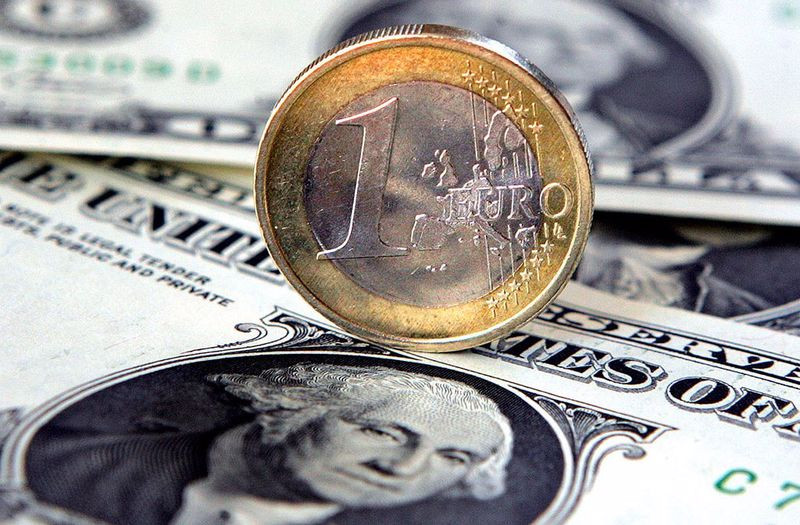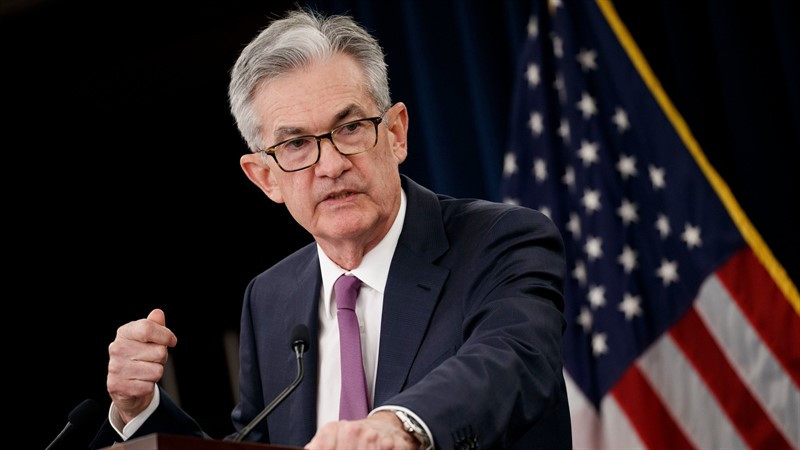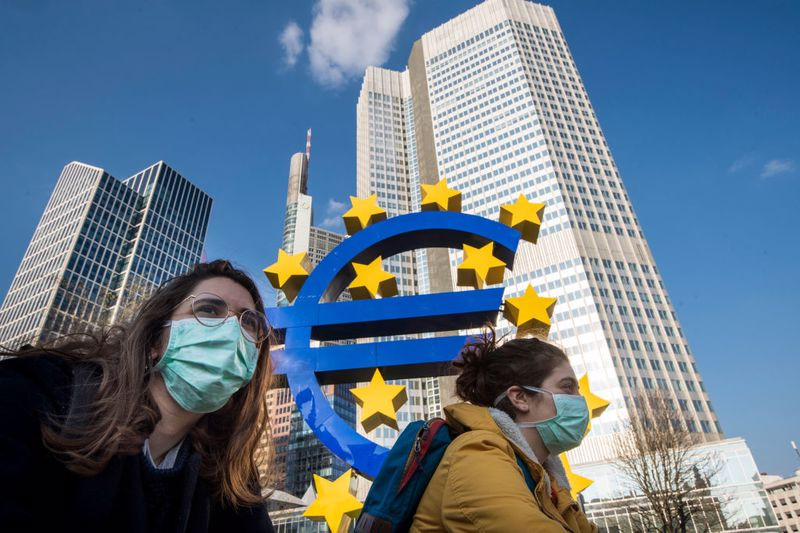
Until recently, the main driving force in the foreign exchange market was how traders perceived the various speeds at which leading central banks would stop stimulating the pandemic era incentives and raise interest rates.
The minutes published last week from the November FOMC meeting, along with a stream of positive data on the US, supported market speculation about a faster reduction in asset purchases and an earlier tightening of monetary policy by the Federal Reserve.
In addition, Fed Chairman Jerome Powell, who was re-nominated to the post of head of the US central bank, outlined a course to fight inflation in his welcoming speech, which spurred expectations of a Fed rate hike next year.
This served as a favorable environment for the dollar, which rose to new annual highs around 96.90.
At the same time, the EUR/USD pair tested the lowest levels in 17 months, touching 1.1185. However, then it rose sharply against the background of news received from South Africa about the discovery of a new strain of coronavirus.
On Friday, the euro jumped against the US dollar by almost 1%, as traders began to bet that the resulting uncertainty could force the Fed to soften its position. Such expectations were reflected in the decline in the yield of treasuries, as well as in the dynamics of futures on the federal funds rate.
However, already on Monday, investors felt that the market reaction to the discovery of a new version of the coronavirus – Omicron - was excessive. This helped the dollar to restore positive dynamics and put some downward pressure on the main currency pair. Following the results of yesterday's trading, it sank by more than 0.3% to 1.1280.
Statements made by European Central Bank representatives the day before kept EUR/USD bulls on the sidelines.

"Downside risks to the prospects for economic growth in the eurozone remain. Therefore, we strive to avoid premature tightening of monetary policy in response to exceeding the inflation target. We are unlikely to witness an increase in interest rates next year or even for some time after that," said ECB Governing Council member Pablo Hernandez de Cos.
The comments of ECB Vice President Luis de Guindos, who confirmed that the factors underlying inflation are temporary, did not add optimism to the single currency.
De Guindos said that the economic situation is characterized by a high degree of uncertainty amid outbreaks of coronavirus infections and the emergence of new variants of COVID-19. He also warned that the potential withdrawal of monetary support should be taken very carefully, and it is important for the ECB to keep all monetary policy options open.
Meanwhile, the theses of Powell's speech to the Senate Banking Committee released on Monday contributed to a decline in US Treasury bond yields and helped limit losses for the EUR/USD pair.
According to the head of the Fed, the spread of a new strain of COVID-19 "Omicron" in the United States carries risks for both parts of the central bank's mandate, since it can, on the one hand, exacerbate the problem of inflation, and on the other hand, limit employment.
Traders perceived Powell's comments as a signal that the increase in the base interest rate by the Fed may be postponed for a longer period than previously expected.
As a result, the USD index resumed its decline and returned to the area below 96.00 on Tuesday.
Taking advantage of the dollar's weakness, the EUR/USD pair moved above the key barrier of 1.1300 on the way to two-week peaks, but faced resistance in the area of 1.1360-1.1380.

Powell, who will address the Senate today, forecasts US GDP growth of 5% this year, but notes that the new version of COVID-19 creates risks of declining economic activity and jobs and increases uncertainty about inflation.
This month, the US central bank began to reduce its support for the national economy.
According to the minutes from the last FOMC meeting published last week, due to the rapid rise in consumer prices, some Fed officials indicated that the central bank could accelerate the pace of QE reduction to provide more opportunities for an earlier interest rate hike next year, if necessary.
"However, the new variant of COVID-19 may complicate any plans to accelerate the reduction of QE at the December Fed meeting, which was the direction in which the central bank was moving before the discovery of a new strain of coronavirus," Wells Fargo analysts said.
In addition to Powell. A number of representatives of the Fed are due to speak this week, and traders would like to know whether the central bank will continue to tighten its policy in the face of a new variant of COVID-19.
If FOMC officials refrain from saying that a new strain of the virus can change their approach to policy, we can see how bond yields are gaining momentum, and the dollar is strengthening against its counterparts.
"Omicron may have a significant effect on growth, but the range of medical and, consequently, economic scenarios remains unusually wide. Given this and the possibility of a "false alarm", we are not making Omicron-related changes to our forecasts of economic growth, inflation and monetary policy until the probability of these scenarios becomes clearer," Goldman Sachs strategists said.

Meanwhile, Citi says that the current outbreak of Omicron strengthens and supports its optimistic view of the dollar.
"If concerns about this variant of the coronavirus increase, the exchange rate of the US currency should be supported by the demand for safe haven assets. If it turns out that the Omicron strain is not so dangerous, then the dollar will probably be supported by the outpacing growth of the US economy, at least until the end of the year," the bank's analysts noted.
Meanwhile, according to analysts, despite the attempts of EUR/USD bulls to recoup, the current corrective dynamics of the pair is unlikely to develop into a steady upward movement.
The euro risks being under pressure due to the deterioration of the epidemiological background in the eurozone and the still uncertain position of the ECB on tightening monetary policy. In addition, the energy crisis in Europe may intensify with the onset of winter.
The problem is that it is unlikely to be possible to fix anything on the supply side in the near future, since Russia supplies only what it needs, and Qatar claims that it produces as much as it can. According to experts of Rystad Energy, instead the energy industry has to rely on the "destruction of demand".
This forecast increases anxiety in Europe. The region was again at the epicenter of the pandemic due to an increase in the incidence of COVID-19, and the whole world was gripped by fears about a new strain of the virus detected in South Africa. In some European countries, stricter restrictions are being imposed, while household budgets are shrinking due to rampant inflation.

The data published today showed that annual inflation in the eurozone, according to preliminary estimates, accelerated to a record 4.9% since July 1991 from 4.1% a month earlier.
"The latest data on inflation in the eurozone show that price pressures remain strong, and therefore inflation looks likely to remain above the ECB target at least until the end of next year," according to Capital Economics.
It is possible that accelerating inflation will force the ECB to reconsider its extra soft approach to monetary policy. So far, the central bank prefers to stick to a wait-and-see position and does not cease to assert that the current inflation rates are temporary.
On Monday, ECB Governing Council member Isabelle Schnabel said that November will be the peak of inflation. She predicts that inflation will fall below the 2% target.
Scotiabank strategists maintain a bearish view of the euro with a goal of $1.10-1.11 against the background of the ECB's soft position and increased chances of widespread introduction of lockdowns on the European continent.
"The inability of the single currency to stay above $1.13 will suggest that the downward trend in EUR/USD will resume in the coming days," they said.
The next barrier to EUR/USD growth occurs at the level of 1.1375, followed by 1.1390 and 1.1460. On the other hand, in case of a break below 1.1185, 1.1160 and 1.1145 will be the main focus.





















